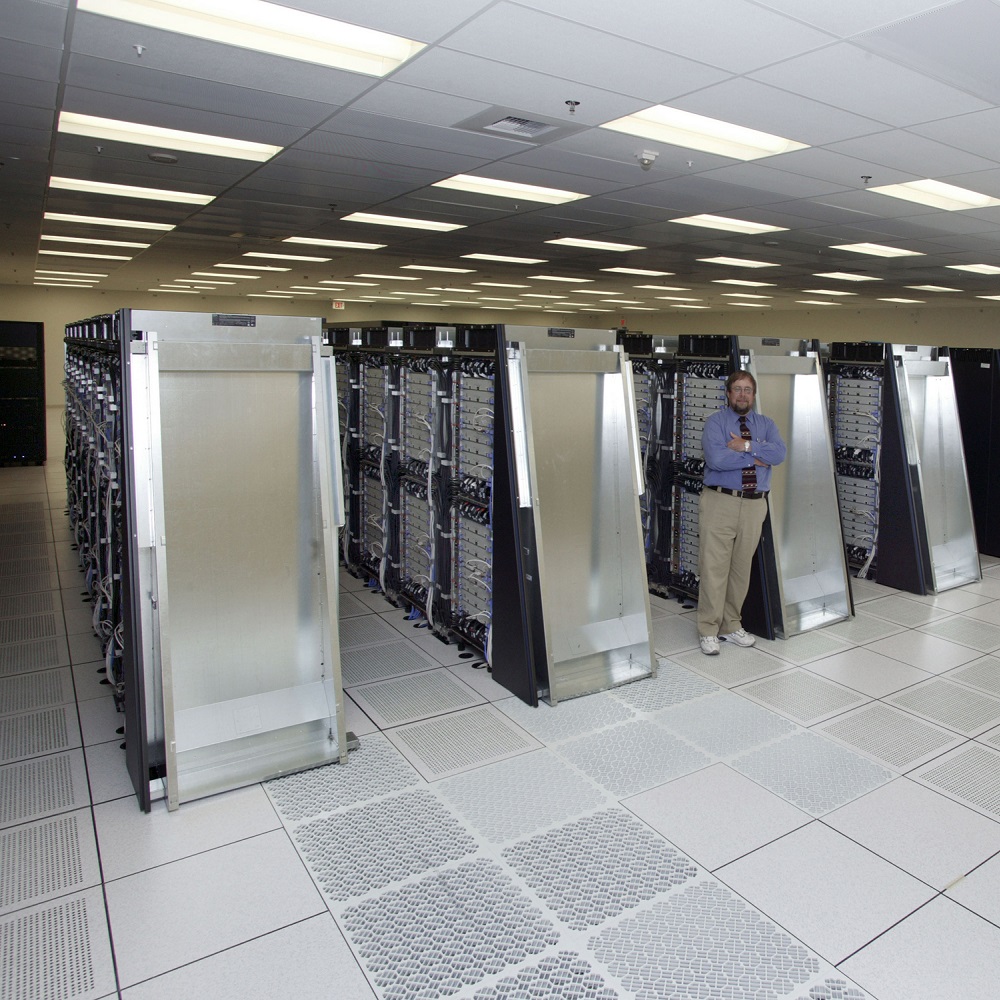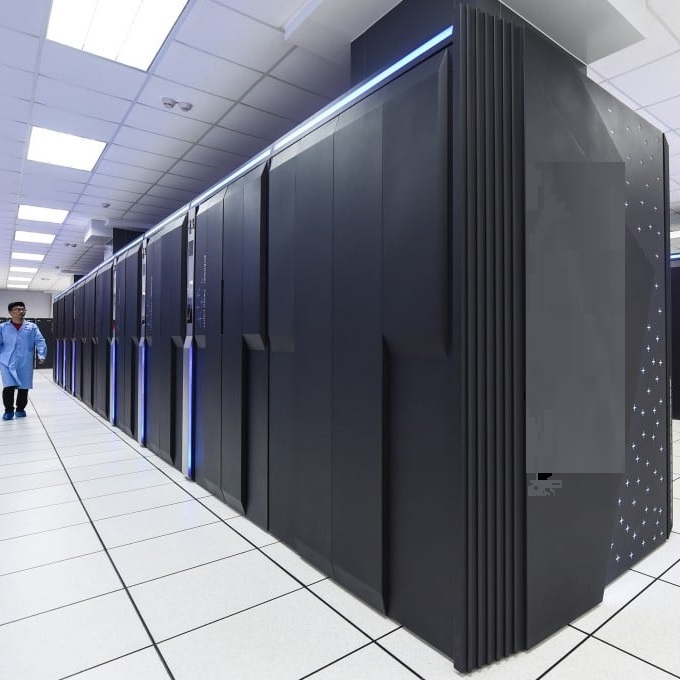Overview of Supercomputers
The term ‘supercomputer’ marks a pinnacle in computing power. These are not your regular computers; they are engineered for handling vast amounts of data and performing complex calculations at extraordinary speeds. Supercomputers represent the most powerful computer in the world category, equipped with an infrastructure requiring advanced cooling systems and a myriad of components.
Key Characteristics and Components
Supercomputers boast thousands of potent CPUs and GPUs, unlike a standard PC which might have one of each. Their raw power is measured in FLOPS, showcasing their ability to execute trillions of calculations per second. The top-tier supercomputers have breached the exaFLOP threshold, signifying their capability to perform quintillion calculations every second. This computing muscle allows them to tackle extensive scientific problems, from drug discovery to weather prediction.
Evolution of Computing Power Over the Years
Over the years, supercomputers have evolved, leaping from performing a few million operations per second to quintillion operations. This evolution mirrors advancements in technology and the growing demands of computation-heavy research and applications. Each new generation of supercomputers has set a benchmark, paving the way for further discoveries and innovations in various fields.
The Top Supercomputers in the World
Supercomputers are marvels of the tech world. They push boundaries and redefine speed and efficiency. In our quest to understand the most powerful computer in the world, we spotlight the leaders in this field.
Frontier at Oak Ridge National Laboratory
Frontier stands out at Oak Ridge National Laboratory (Tennessee, U.S.) as the world’s first exascale computer. It boasts a stunning performance of 1.2 exaFLOPS. Built by HPE Cray, it houses AMD EPYC CPUs and AMD Instinct GPUs. Frontier’s debut in 2022 marked a milestone in supercomputing. Its design targets a range of research, from medicine development to nuclear fusion. It even explores the evolution of galaxies, a testament to its unparalleled capabilities.
Aurora: Intel and HPE’s Exascale Machine
Aurora shines at Argonne National Laboratory (Illinois, U.S.) with 0.59 exaFLOPS of power. A collaborative effort by Intel and HPE, Aurora is the second exascale supercomputer ever. It promises even double Frontier’s power. Launched in June 2023, Aurora is a hub for scientific analysis. It makes strides in climate science, energy, and nuclear fusion research. Aurora’s potential to revolutionize these fields is immense.
Eagle: Microsoft’s Cloud-Based Supercomputing
Microsoft introduces Eagle, a new take on supercomputing through the cloud. With 0.56 exaFLOPS, Eagle operates on Microsoft Azure’s distributed network. This setup allows easy access for users across the globe. Eagle is a testament to the power of cloud computing in expanding supercomputer accessibility. Its debut in August 2023 marked a shift in how we think about computational resources and their availability.
Innovative Uses of Supercomputers
The impact of supercomputers stretches across various scientific landscapes. We witness their power not only in their rapid data processing but also in their real-world applications.
Research in Health and Disease
Supercomputers have transformed health and medicine. They enable researchers to simulate complex biological processes. This leads to new drug discoveries and treatments. During the COVID-19 pandemic, supercomputers screened millions of drug compounds. They helped find potential treatments in record time. This speed is crucial in fighting health crises. It gives scientists a head-start against diseases. Besides drug research, supercomputers assist in medical imaging and genetic sequencing. This paves the way for personalized medicine — treatments tailored to individual genetic profiles.
Environmental Forecasting and Climate Science
Climate change poses a global challenge. Supercomputers offer a tool for understanding this change. They model complex climate systems with high accuracy. These models predict weather patterns and natural disasters. They help in planning for floods, hurricanes, and droughts. With such data, we can better protect communities and the environment. The detailed simulations also support research into renewable energies. They aid in creating more sustainable living practices.
Energy Solutions and Nuclear Fusion
The search for clean energy solutions benefits greatly from supercomputers. They simulate nuclear fusion, a potential game-changer for energy production. The complexity of fusion reactions demands immense computational power. Supercomputers like Aurora are tasked with unlocking fusion’s secrets. If successful, we could see a new era of abundant clean energy. This would greatly reduce our dependence on fossil fuels and help mitigate climate change.
Technological Advances in Supercomputing
Supercomputing has seen many technological breakthroughs. These upgrades enhance their capabilities far beyond traditional use cases.
Integration of AI and Machine Learning
AI and machine learning have become integral to supercomputing. They help tackle complex tasks more efficiently. Such integration enables quicker data analysis and better decision-making. The most powerful computer in the world now often includes AI-specific hardware. This allows for rapid training of models. It also provides insights in fields like genomics and climate science. Supercomputers with AI play a key role in research and industry.
Quantum-Enhanced Supercomputing Capabilities
The union of supercomputing and quantum technology is groundbreaking. It promises faster problem-solving abilities. Quantum-enhanced supercomputers apply quantum principles. They achieve what traditional systems cannot. This includes simulating molecule interactions in drugs. These computers are still in the early stage. Yet, they show potential for transforming computing sectors. They will likely shape future technological landscapes.
The Future of Supercomputing
As we step into the future, supercomputing continues to break new ground. The emergence of next-generation exascale computers ushers in a new era of possibilities, paving the way for advancing society and various scientific domains. The most powerful computer in the world now is just a precursor to what will come. These future machines will likely exhibit astonishing levels of computational prowess, pushing the boundaries of what we perceive as possible today.
Next-Generation Exascale Computers
The next wave of exascale computers promises revolutionary changes. They will handle increasingly complex calculations and data-heavy tasks with ease. Their speed and power will far surpass current models. Advances in technology will enable these computers to operate at even greater efficiencies. The shift toward exascale is not just about speed. It’s about enabling new types of research and problem-solving approaches previously inconceivable.
The Expanding Role of Supercomputers in Society
Supercomputers are not just tools for scientists. Their role in society keeps growing. They help in managing cities, predicting economic trends, and securing networks against cyber threats. Their use will become more widespread across industries, affecting how we live, work, and interact with technology. As we harness their capabilities, supercomputers will play a significant role in tackling some of the most pressing challenges we face as a global community. Health, environment, and energy are just the starting points for the potential impact of these computing giants.

Challenges in Supercomputing
While supercomputers represent the zenith of computing capabilities, they come with significant challenges that impact their design, operation, and future development.
Engineering and Architectural Challenges
Building the most powerful computer in the world is no small feat. Supercomputers demand excellence in engineering and architecture. Perfecting such systems involves managing thousands of robust CPUs and GPUs. This requires mastering complex connections and ensuring seamless communication between components. Designers face hurdles in keeping these machines stable and reliable over time. They also must accommodate rapid technological changes. Supercomputers need frequent updates to stay at the forefront of power and efficiency. Each upgrade or new build must factor in cutting-edge tech and scalability for future demands.
Sustainability and Energy Consumption
The might of supercomputers comes with a hefty energy bill. These machines consume vast amounts of electricity. Sustainability is a pressing issue. Operators aim to power supercomputers with renewable energy, just like the LUMI supercomputer in Finland. They also try to reuse waste heat to warm nearby facilities. The goal is to balance exceptional performance with eco-friendly operations. Reducing carbon footprint while maintaining top speed is a crucial quest. As we progress, energy-efficient chips and sustainable practices will define supercomputing’s success as much as speed and power.


